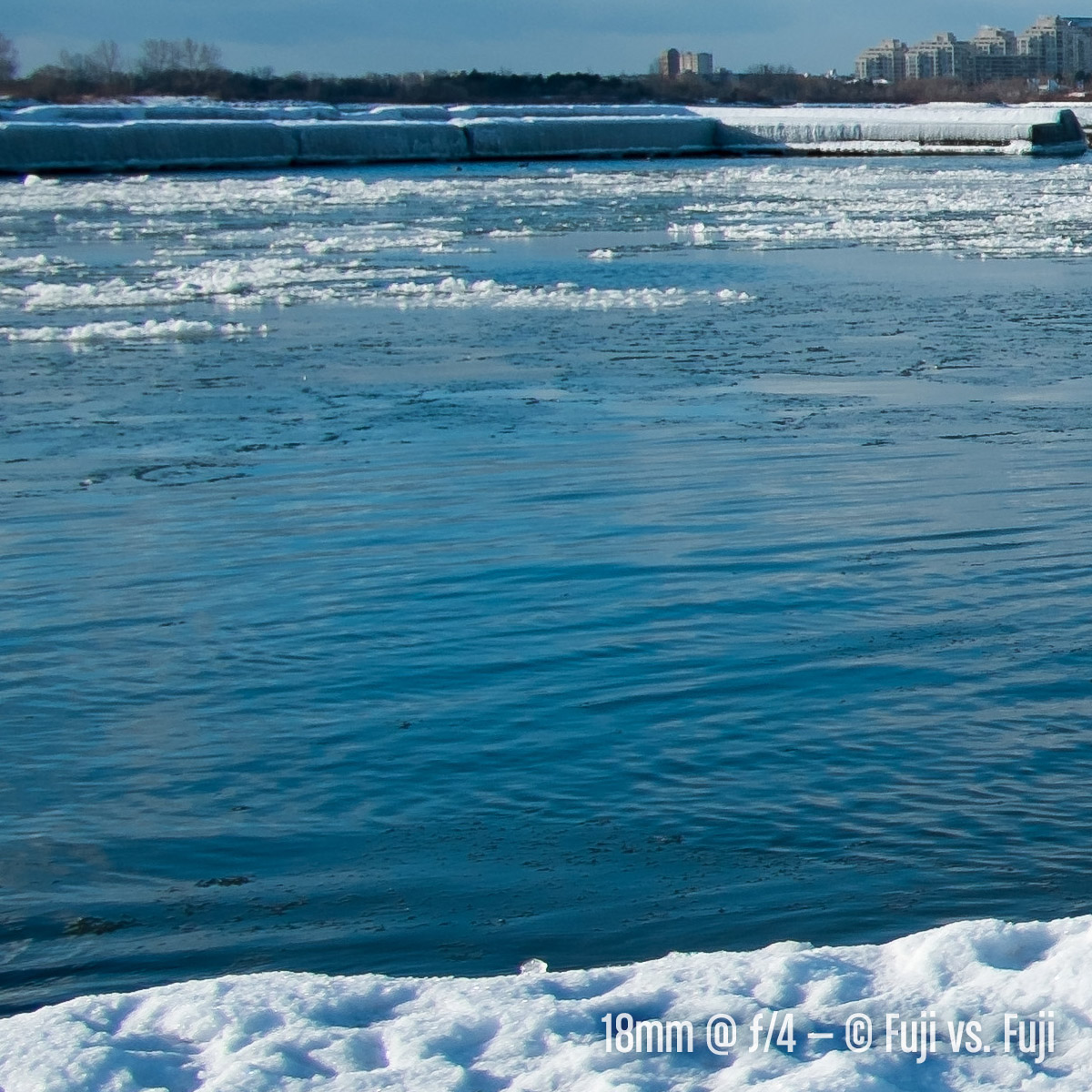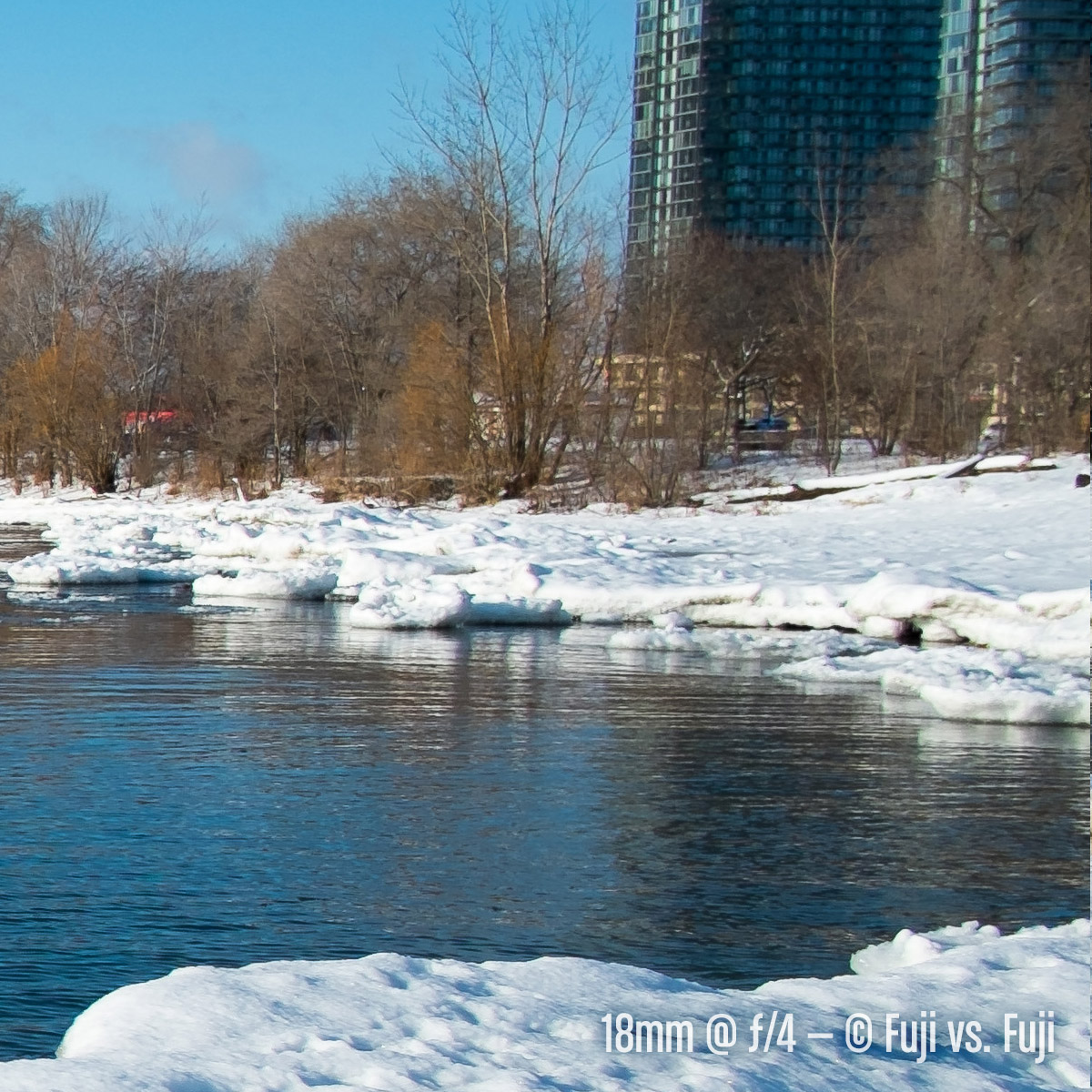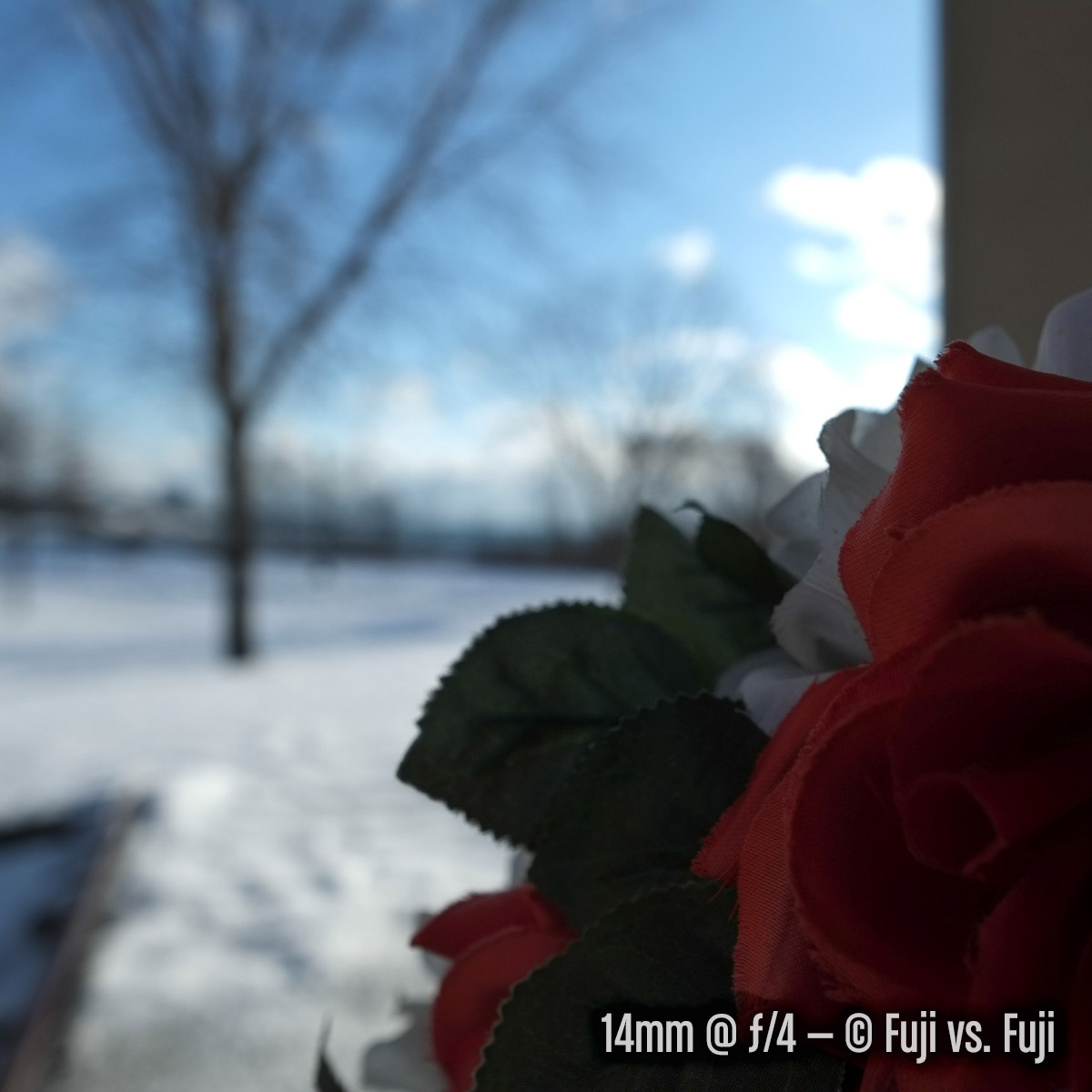Fuji XF 14mm F/2.8 vs. XF 18mm F/2, a comparison between Fuji’s wide angle FUJINON prime lenses.
This article was originally published well before the release of the XF 16mm f/1.4. While much of the commentary is out of date, the image comparisons still apply. Don’t miss my more recent look at Fuji’s three widest primes.
Introduction
Prime users have two decidedly different options to choose from on the wide end of Fuji’s offerings. The FUJINON XF 14mm f/2.8 is wider, larger, heavier, and more expensive then the remarkably tiny and light FUJINON XF 18mm f/2. The 14mm is actually not that large or heavy, but next to the diminutive 18, it’s absolutely mammoth. The extra size, heft, and price adds up to a lens that performs better overall, optically speaking.
If you’d like to purchase one of these lenses, or anything else for that matter, please consider using one of the Amazon affiliate links below. The price is the same for you, but a small percentage of the purchase price goes to me, which helps keep this site going. Thank you.
Specifications
| XF 14mm F/2.8 | XF 18mm F/2 | |
|---|---|---|
| Announced | September 6, 2012 | January 9, 2012 |
| Released | January, 2013 | February, 2012 |
| Price (MSRP) |
$899 | $599 |
| Lens Construction | 10 elements, 7 groups 2 aspherical, 3 extra low dispersion elements |
8 elements, 7 groups 2 aspherical elements |
| 35mm Equivalent | 21.28mm | 27.36mm |
| Angle of View | 89° | 76.5° |
| Aperture Range | f/2.8 - f/22 | f/2 - f/16 |
| Focus Range | 0.3m (18cm Macro) - Infinity | 0.8m (18cm Macro) - Infinity |
| Maximum Magnification | 0.12x | 0.14x |
| External Dimensions | 65mm diameter x 58.4mm | 64.5mm diameter x 33.7mm |
| Weight (Measured) | 235g 273g with caps and hood |
118g 138g with caps 149.5g with caps and hood |
| Filter Size | 58mm | 52mm |
Handling
The aperture ring on the first copy of the 14mm f/2.8 I bought was quite loose. Hunting around online suggested that while it wasn’t uncommon for the aperture ring to be loose on the 14mm, there were lenses out there that were tighter than others. I headed back to the store to try another sample, and the other one was significantly better. I would say my 14mm, 23mm, and 35mm all feel about the same. Curiously, on two separate copies of the 18mm, the aperture ring is noticeably tighter, almost too tight. The focus ring also has a tiny bit of play to it, but it’s not enough for me to be concerned about. This also applies to both copies I’ve had. The knurled focus ring on the 14mm, on the other hand, is so fantastically grippy and sharp, it feels like it could cut your fingers if you squeeze too hard. I love it. There is zero play in either of the samples I’ve had. The dampening of the focus ring on all lenses has been excellent.
The 14mm comes with another major advantage in the handling department, and that’s its depth of field scale. The 14mm and the FUJINON XF 23mm f/1.4 are the only Fuji lenses to date that have the excellent depth of field scales, and a focus ring you simply pull towards you to focus manually. I would happily take whatever increase in size this feature added to the 18mm, and 35mm for that matter.
I wonder a little bit about the hood that’s supplied with the 14mm. It’s exactly the same as the hood that comes with the FUJINON XF 18-55mm f/2.8-4 which has been available for quite some time now. I’m curious if the shade is as optimized for the 14mm as it could be. It’s also huge compared to cool-looking metal hood provided with the 18mm. If only the cap would stay on the 18’s hood. As it stands, I usually leave the hoods at home—except for when I’m doing test images, of course—and put Nikon lens caps on the lenses which I find less fiddly.
Field of View
This batch of images illustrates the difference in field of view, and perspective. The framing of the monument was adjusted in the 3rd image to match the 18mm more closely. Click to enlarge and arrow through the gallery to get a good sense of the differences.
It’s no surprise that the 14mm is wider than the 18mm, but the difference is really apparent here. More dynamic results can be achieved with the FUJINON XF 14mm f/2.8. On the flip side, distortion of people’s faces will be far less pronounced on the FUJINON XF 18mm f/2.
Landscape
Either focal length can be ideal for landscape images. The 14mm seems to be slightly more optimized for landscape shooting, given its widest aperture of f/2.8, smallest aperture of f/22, and that lovely depth of field scale. Let’s see how things stack up. Below is a plain winter landscape image at f/4 and f/8. You know I don’t like making you wade through tons of images. The story is the same at the other apertures, and diffraction starts to set in heavily after f/11.
These images are shot in RAF format to give you the most accurate idea of sharpness possible. They were imported into Lightroom with the exact same Sharpening applied. Some minor Treatment adjustments were also applied to compensate for exposing to the right and using up the histogram. Focus was on the two buildings in the centre of the frame.
The horizons on both images appears to look ok. There’s not a significant amount of distortion when focused at this distance on either lens.
Crops
It’s a little tricky to tell because of the difference in focal length, but the 14mm f/2.8 appears to be producing noticeably sharper images in the centre of the frame at f/4 and especially at f/8.
Even less can be easily gleaned from these crops, but of note are the trees on the horizon. The 14mm is holding much more detail right out to the edge whereas the 18mm starts to look a little soft.
And finally, on the right side, I lined up the building as closely as possible. This gives a slight edge to the 14mm as we’re not looking at the edge of the frame, but the trees to the left of the building are far enough out for a far comparison. Once again, the 14mm is holding detail better than the 18mm.
Bokeh!
Finally, it’s the 18mm’s time to shine. Surely with the larger f/2 aperture, and the same minimum focus distance of 18cm in Macro mode will give the 18mm an edge.
Indeed it does. That tree melts away much more at f/2. The longer focal length also helps the 18mm’s out of focus rendering through to f/4. Bokeh typically isn’t what you’d buy a 21mm equivalent lens for. Still, it’s nice to see that the 14mm’s bokeh isn’t terrible. My test shot, however, is pretty terrible. I didn’t realize how blown out the highlights were as I was making these test shots. I’ll have to retake them with more care. For the time-being, they illustrate what most of us probably already knew, in the wide-angle prime bokeh battle, the 18mm takes the cake.
Conclusion
Given the compact size, light weight, and faster aperture, I’d say the FUJINON XF 18mm f/2 was made with street photographers in mind, more so than landscape fans. The creamier bokeh also suggests it could be useful for wide-angle portraiture. In some ways, the FUJINON XF 18mm f/2’s characteristics remind me of the old Nikkor 85mm f/1,4 AF-D; optimized for centre sharpness and soft backgrounds. The corners and edges on that lens were terrible, much worse than the FUJINON XF 18mm f/2, but the centre was sharp so it worked great for portraiture.
The FUJINON XF 14mm f/2.8 is just stellar; a must-have for Fuji landscapers. While bigger than the 18mm, it’s still relatively small and lightweight. It also provides excellent handling, and super sharp images. It currently has its own spot in my Billingham.





































